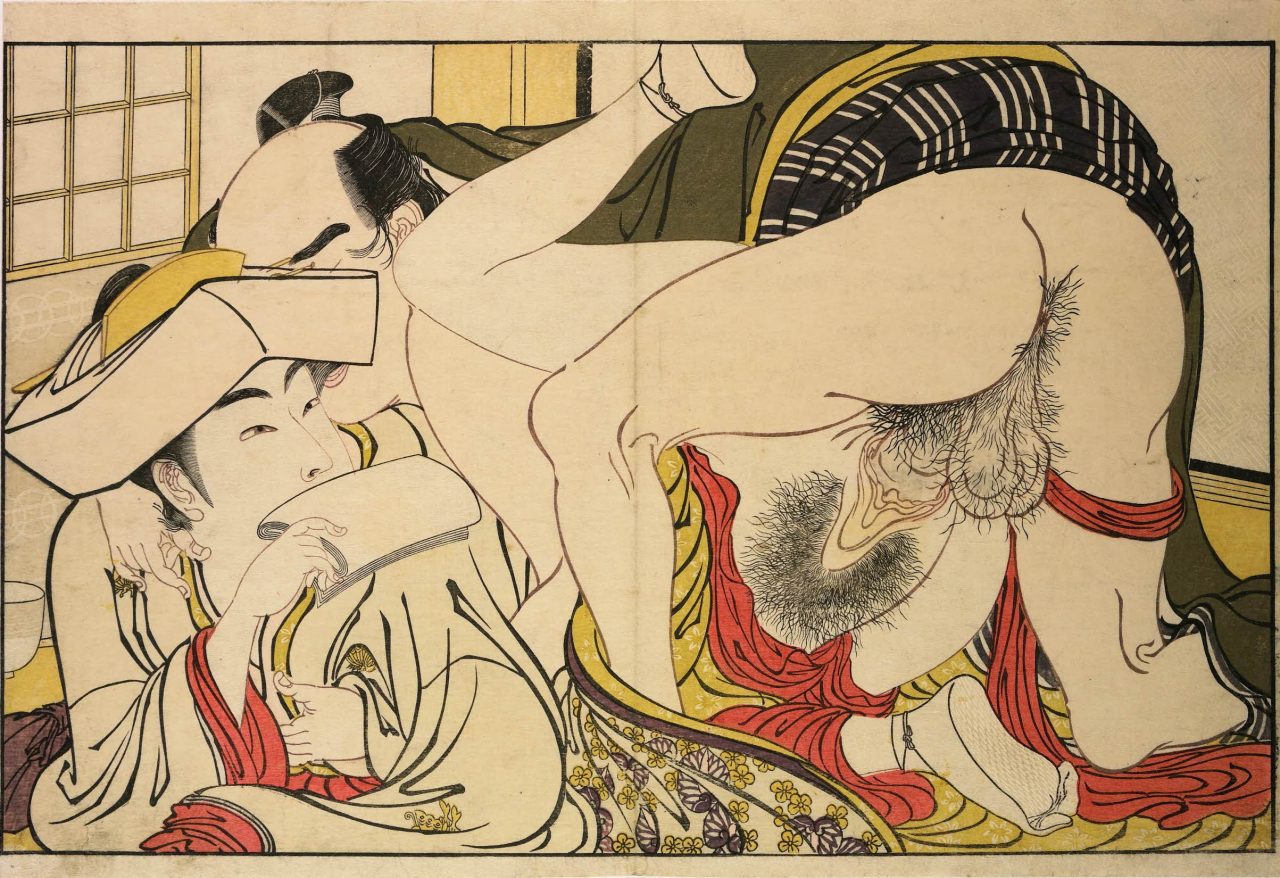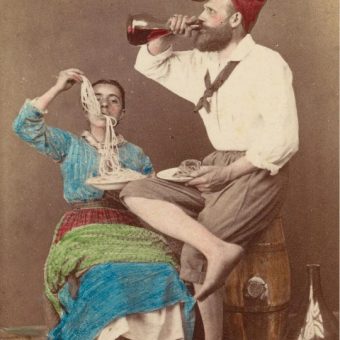
From the woman's tsunokakushi headdress the scene is presumed to take place at a shrine; since the Meiji period (1868–1912), the tsunokakushi has come to be associated with Japanese weddings, but in the Edo period they were used for temple visits. The picture suggests the visit was but a pretence for a secret tryst[18] between what are probably servants in samurai mansions.[19] The young man leans toward the young woman, appearing to whisper in her ear, while the woman holds a wad of kaishi paper to her mouth. The ukiyo-e scholar Kiyoshi Shibui [ja] named the male "Orisuke" (折助), a nickname given to young male servants in the Edo period, but Yoshikazu Hayashi doubted the figure came from such a low rank.[13] Amongst the fine printing details are the glittering mica dust applied to the tsunokakushi and the karasuri embossed pattern on the sole of the bride's tabi sock.[18]




